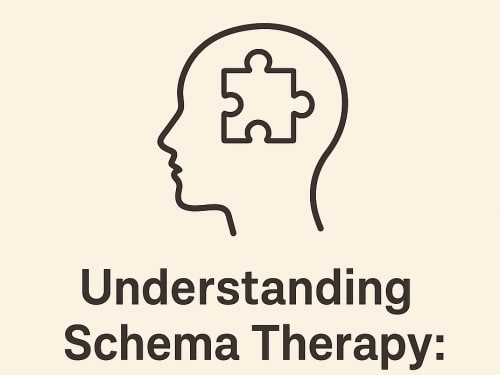🧠 Understanding Schema Therapy: Healing the Patterns That Shape Us

posted 12th November 2025

🧠 Understanding Schema Therapy: Healing the Patterns That Shape Us
Mental health isn’t just about managing symptoms; it’s also about understanding the patterns of thought, emotion, and behaviour that have shaped us over a lifetime. That’s where Schema Therapy comes in.
Developed by Jeffrey Young in the 1990s, Schema Therapy blends cognitive-behavioural therapy (CBT) with attachment theory, psychodynamic concepts, and emotion-focused techniques to tackle deep-rooted patterns known as schemas.
🌱 What Are Schemas?
Schemas are like mental maps or core beliefs we develop in childhood about ourselves, others, and the world. They guide how we interpret experiences, sometimes in helpful ways, but often in ways that cause distress.
Examples include:
- Abandonment: Expecting people to leave or reject you.
- Mistrust/Abuse: Believing others will hurt or betray you.
- Defectiveness/Shame: Feeling fundamentally flawed or unworthy.
- Emotional Deprivation: Believing your emotional needs won’t be met.
These schemas often lie beneath the surface, influencing relationships, self-esteem, and emotional reactions, long after the childhood experiences that formed them.
🔄 How Schema Therapy Works
Schema Therapy works by:
1. Identifying schemas: Recognising the patterns that repeatedly cause distress.
2. Understanding origins: Exploring how these schemas developed, often in childhood.
3. Challenging unhelpful patterns: Learning to question and reframe maladaptive beliefs.
4. Changing behaviour: Practising new ways of thinking, feeling, and interacting.
5. Emotional healing: Using experiential techniques (like imagery, role-play, and chair work) to “reparent” the inner child and meet unmet emotional needs.
Unlike standard CBT, which often focuses on changing thoughts in the moment. Schema Therapy targets the root cause, such as the underlying beliefs and emotional patterns formed early in life.
💡 Who Can Benefit?
Schema Therapy is especially effective for:
- Personality disorders, particularly borderline personality disorder
- Chronic depression or anxiety that doesn’t respond fully to standard therapies
- Relationship difficulties rooted in recurring patterns of behaviour or emotional triggers
- Anyone who struggles with self-esteem, perfectionism, or recurring emotional patterns

🧩 Real-Life Example
Imagine someone with an abandonment schema: they constantly fear friends or partners will leave, and as a result, act overly clingy or withdraw emotionally to “protect themselves.” Schema Therapy helps them recognise the pattern, understand its origins, and practice healthier ways of relating; gradually reducing anxiety and building more stable relationships.
🌿 Why It Matters
Schema Therapy emphasises healing, not just coping. It acknowledges that deep-rooted patterns are often understandable responses to early experiences. By combining insight, emotional processing, and practical behavioural strategies, it helps people break free from lifelong cycles of distress.




